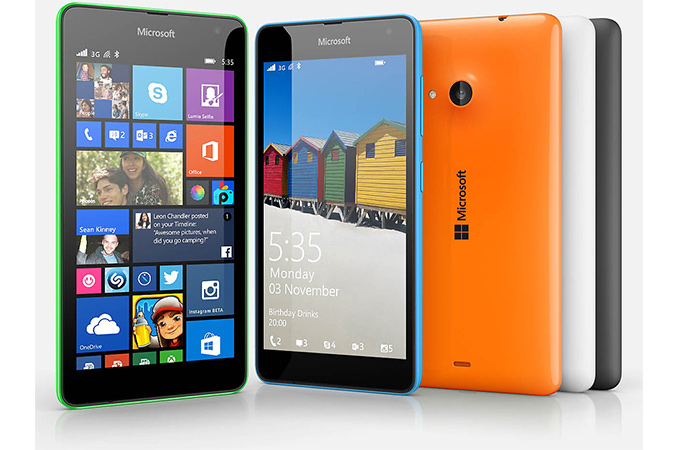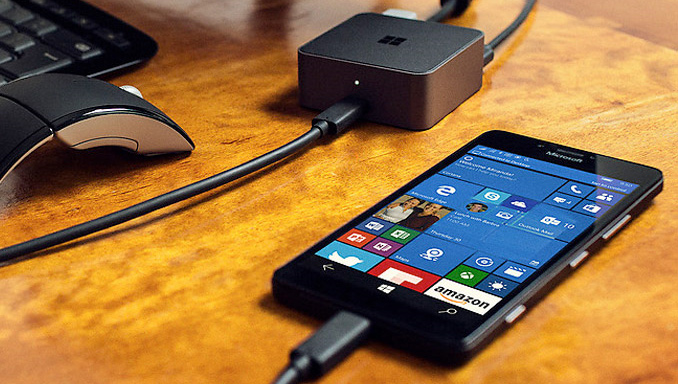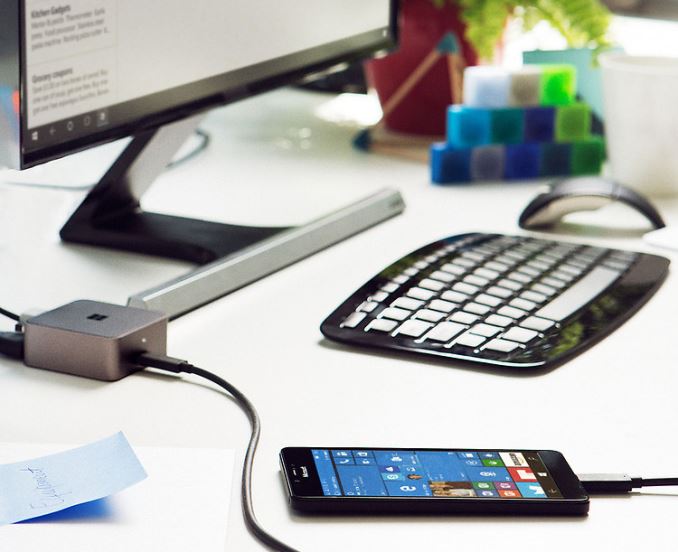Microsoft Streamlines Its Smartphone Business Again, Lays Off 1850 People
by Anton Shilov on May 25, 2016 4:45 PM EST- Posted in
- Smartphones
- Microsoft
- Nokia
- Lumia
- Windows 10 Mobile

Microsoft on Wednesday announced another reorganization of its smartphone business with plans to streamline operations and eliminate redundant personnel. The company will lay off 1850 of its employees in Finland and other countries and will take a $950 million charge. The actions seem to be in line with Microsoft’s plans to focus on development of flagship smartphones and leave the market of mass handsets.
When Microsoft closed its acquisition of Nokia in late April, 2014, it received approximately 25,000 new employees from around the world, who were involved into development, production, sales, and distribution of smartphones and feature phones. Shortly after, in July, 2014, Microsoft laid off 12,500 former Nokia staff as a part of its major reorganization, when it let go 18,000 Microsoft employees in total. The first wave of dismissals eradicated numerous positions at Nokia and shut down the division, which developed software for feature phones, leading to eventual elimination of Asha devices from Microsoft’s lineup.
A year after the company announced the first phase of streamlining, the software giant revealed further plans for phone business restructuring. In July, 2015, Microsoft decided take an impairment charge of approximately $7.6 billion related to assets associated with the acquisition of the Nokia Devices and Services business, and take a restructuring charge of approximately $750 million to $850 million. As part of its second phase of optimizations, the company laid off another 7,800 former Nokia employees globally. Besides, Microsoft announced their intentions to focus on flagship smartphones and generally to phase out inexpensive handsets going forward.
Today’s announcement further eliminates 1350 jobs in Finland as well as 500 additional jobs globally. The actions are to be fully completed by July, 2017, and will cost Microsoft approximately $200 million related to severance payments. Microsoft further noted that sales teams based in Espoo, Finland, will not be affected by the layoffs.
As a result of its optimizations of the handset business, by mid-2017 Microsoft will have eliminated approximately 21,650 former Nokia employees out of the iniitlal ~25,000 who joined Microsoft in 2014. Moreover, as 4,500 former Nokia staff are set to join FIH Mobile or HMD Global in the coming months, it means that by mid-2017 the absolute majority of the former Nokia employees will be gone from Microsoft.
Microsoft did not reveal any new plans concerning its smartphones going forward, but repeated what it said in 2015: the company will concentrate on flagship models and will support its traditional hardware partners with development of their smartphones featuring Windows 10 Mobile. The software giant sees security, manageability and Continuum feature as its key strengths on the smartphone market going forward, which essentially indicates that the company sees enterprises as the main customers for its handsets. Microsoft did not mention its PureView camera and other consumer focused assets it got from Nokia as its unique advantages to address consumers, which may indicate that the company no longer considers consumers as its main customers in the smartphone world.
“We are focusing our phone efforts where we have differentiation — with enterprises that value security, manageability and our Continuum capability, and consumers who value the same,” said Satya Nadella, chief executive officer of Microsoft. “We will continue to innovate across devices and on our cloud services across all mobile platforms.”
What the head of Microsoft did mention is that the company will continue to offer cloud-based services to all mobile platforms. Again, this is not something new as it emphasizes Satya Nadella’s cloud approach to mobile and his reluctance to fight against Apple, Google and Samsung in the world of mobile platforms and mobile hardware.
Source: Microsoft












78 Comments
View All Comments
Michael Bay - Thursday, May 26, 2016 - link
Doubling down should be a contender.sorten - Wednesday, May 25, 2016 - link
I bought a Lumia 950 back in November and I love it, but it seems like all news about Windows Mobile is bad news these days. I have noticed a nice uptick in app development with UWP apps, but it's not likely to save the platform. I'll pick the best of Apple / Android options in 2018.rocky12345 - Wednesday, May 25, 2016 - link
I like how it is calling it streamlining when talking about laying off people and like it is a good thing. Why not streamline the board of directors by getting rid of dead weight there or better yet why can't these board of directors take a small decrease. It always seems to come down to laying off the common worker to bring the numbers up in the books. Anyways end of comment...lolruthan - Wednesday, May 25, 2016 - link
Its maybe good platform for just cheap smartphones, but for something better they are dead without android compatibility and even this it, were is any killer feature?I see only 1 way, refresh Winitel, because intel is also dying in phone market, make x86 phones with docking possibility and desktop Windows app compatibility in dock mode + add some not crippled tablets line..
But i think, its too much work for these lazy guys..
Amandtec - Thursday, May 26, 2016 - link
'I fell into a burning ring of fire,I went down, down, down and the flames went higher
And it burns, burns, burns,
The ring of fire, the ring of fire.'
-Johnny Cash
LiverpoolFC5903 - Thursday, May 26, 2016 - link
Nokia mistakesMistake 1: Abandoning Symbian/Series 60 phones as opposed to evolving the OS to make it more modern and competitive.
Mistake 2: Choosing Windows Phone instead of Android as the platform of choice.
Microsoft mistakes:
1) Releasing a half baked OS into the market in the form of WP7.
2)Abandoning WP7 owners when moving to WP8.
3) Giving up on the Lumia line in 2015 as opposed to capitalizing on the 3% odd market share they had and releasing compelling devices across the price ranges. What we were given is a couple of high end handsets and a glut of weak snapdragon 200/400 handsets as opposed to good balanced mid rangers. They could have gone on from 2014 and become a 10% player in 5 years, more than enough to make their business more than sustainable. Instead, they gave up on the Lumia line, did not release any compelling handsets in the mid end and generally lagged behind in software.
4) Abandoning WP8 owners (Lumia 925/Icon, Lumia 920, Lumia 1020, Lumia 1320, Lumia 928, Lumia 820, Lumia 720 and other phones with decent dual core processors and 1 GB RAM.
5) Not working closely with Intel on their mobile chipsets to achieve real convergence between full windows and windows mobile, through the ability to run legacy windows applications. Imagine a 6 inch Intel powered Phone that could run 85% of the programs/apps a laptop can on windows 10.
Imagine a full line of full Windows Handsets from 5 inches to 8 inches, all having Intel processors of different prowess'. That would have given them a real edge in the market.
Now Intel is quitting mobile and Windows phone is dead.
So many mistakes and poor strategic decisions. 2015-16 killed the Windows Mobile phone, due to MS' strategy. Remember 2013-14 and 14-15 were relatively good for WP at around 2.8-3.5% share depending on the source. They did not even TRY to capitalize on that.
Michael Bay - Thursday, May 26, 2016 - link
Android would have buried Nokia just the same, as it buried everything that isn`t Samsung.LiverpoolFC5903 - Thursday, May 26, 2016 - link
Considering the brand equity enjoyed by Nokia in markets such as China, India and South East Asia, switching over to Android or even a mixture of ANdroid, WP and Symbian would have put them in a much better position to fight the oncoming Samsung wave.People used to buy Nokia phones because of the brand name. I am almost certain that Nokia fans who switched over to android handsets would have loved a Nokia branded Android phone that amrried Nokia's traditional strengths in imaging and build quality with the emerging ecosystem for android.
Even now they have a good opportunity to gain some of the amrket share they lost if they play it right.
name99 - Thursday, May 26, 2016 - link
RIM had plenty of "brand equity" in a lot of countries, like Indonesia or South Africa. Didn't help them a damn thing."Brand equity" doesn't last longer than one refresh cycle if you don't have a competitive product, and all the evidence suggests that what Nokia had in store was NOT competitive.
JamesDean17 - Thursday, May 26, 2016 - link
If they would just kick out the guy that came out with the Metro interface in the first place and switch to an interface like Android or old Windows phones had back in the days that would pretty much solve their problems.Aside from that I think Microsoft has some Big Mole inside the company that's doing it's rivals evil work ruinning the companies products by pushing bad ideas forward.